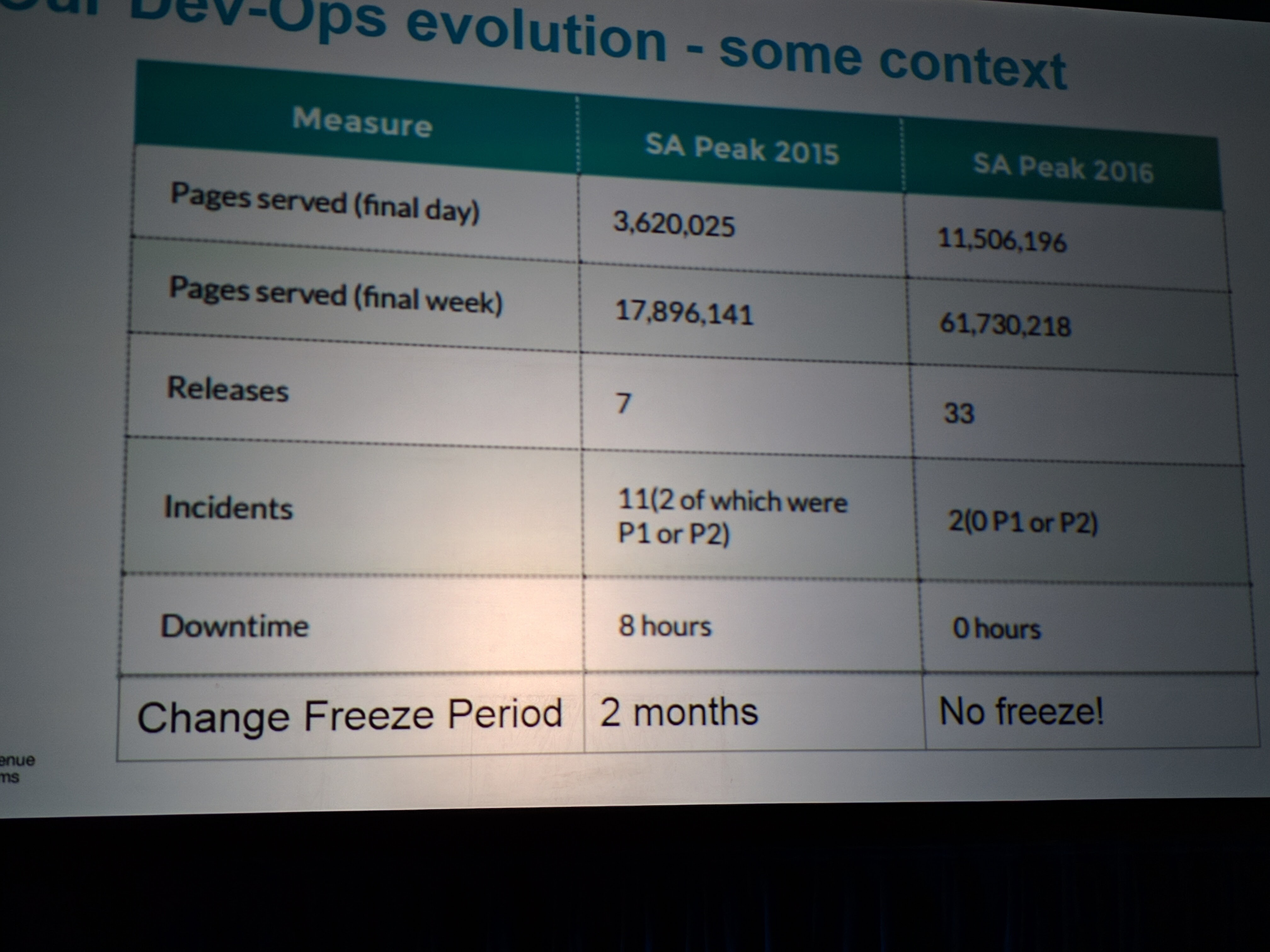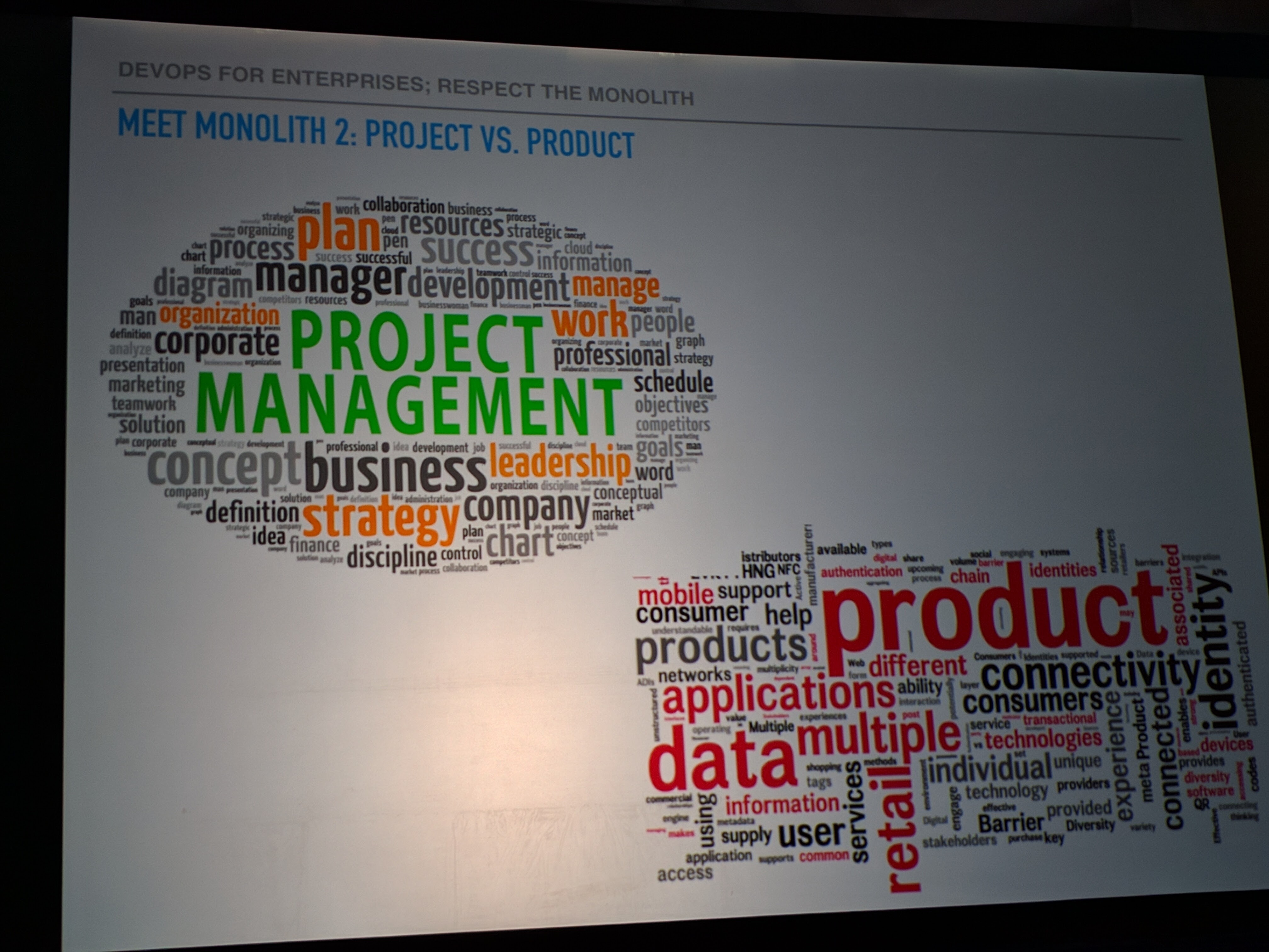DevOps is delivering higher velocity and improved quality in some rather remarkable settings. That's just one of the takeaways from the DevOps Enterprise Summit 2016 in London last week. IT Revolution hosted over 300 participants who shared stories and lessons learned on their respective journeys toward improving how they deliver business value.
Here are five key takeaways from this two-day event that you need to know about the state of DevOps.
1. Large enterprises report big results with DevOps
While many IT leaders may believe that techniques such as continuous delivery are only relevant for the Googles, Facebooks, and Amazons of the world, the news from DOES16 London was that DevOps works in large enterprises, including highly regulated ones. Pick your industry and you could find an example of how DevOps is making a difference.
In financial services, for example, Barclays Bank and ING described their successes. In entertainment, Disney offered its own take, while Zurich Insurance reported on how it overcame issues with outsourcing and silos. Even Her Majesties Revenue and Customs was there to talk about how even a government tax collector can benefit from continuous delivery (hopefully not for continuous taxation).
These are not your typical DevOps early adopters, but rather large enterprises with complicated infrastructures, bureaucracies, and regulatory challenges to overcome.
2. With DevOps they're achieving quality and speed
These DevOps transformations were truly business transformations, with the focus on accelerating the delivery of a measurable business value. Many people assume that if a delivery team increases its speed, quality will suffer. But these businesses report that a DevOps strategy enabled them to deliver higher-quality releases at a higher velocity.
For example, Jonathan Smart, head of development services at Barclays Group, shared a remarkable transformation story of how his team led a transformation to “agility” (agile + DevOps) in less than 24 months. Smart says they increased throughput by a factor of three, while significantly reducing the number of production incidents.
At Her Majesties Revenue and Customs, DevOps adoption resulted in an increase from 7 releases to 33 and a reduction in downtime from 8 hours to zero, said presenter Antony Collard, deputy director for digital delivery.

A DevOps evolution produces results at Her Majesties Revenue and Customs.
These were not unique examples at the conference. They represent a common theme, where adoption of DevOps and the related lean principles have delivered surprising results
3. The focus is on products, not projects

Leaders in many organizations at the conference shared a different perspective on how they organize and manage their work. They described a gradual evolution toward a product- or service-oriented model for organizing and managing their teams.
This isn’t surprising, given that projects are ideal for managing a finite work package with specific deliverables, dates, and budgets. Margo Cronin, head of technology architecture at Zurich Insurance, described how her team overcame this hurdle. Rafael Garcia, director of R&D IT at Hewlett Packard Enterprise, said his organization is exploring how a product-oriented approach could help the HPE IT team with long-term planning.
Since many people are talking about shared responsibility and themes of “if you build it, you run it,” this shift toward product thinking makes sense.
4. It's all about the culture
You can’t buy DevOps, but you can do DevOps. One of the most common theme at DOES 16 London was how DevOps practices are about streamlining, simplifying, and improving how people work with one another. Patrick Debois, a founder of the DevOps movement, said DevOps success is not about having multidisciplinary superstar engineers, but teams with members who have empathy for one another and who respect, trust, collaborate, and share with one another.
Changing a culture from traditional silos, where tickets and SLAs define the interaction of most modern IT shops, to one where teamwork, collaboration, and learning are valued is a massive undertaking that requires leadership at all levels. Ron van Kemenade, CIO at ING, empowered his mobile app development teams to experiment and adopt a new engineering culture. He described his role as a leader who sets the vision and protects the team. At Barclay’s, Smart said, the bank made a big investment in the training, coaching, and professional development of the IT team. That, he says, ultimately led to the company's rapid transformation.
5. DevOps generates savings: The numbers prove it
The final session concluded with insights from the recently released 2016 State of DevOps Report, by event chair Gene Kim, HPE vice president of software marketing Paul Muller, and report co-author Nicole Forsgren, who is also director, organizational performance and analytics at Chef. High-performing organizations have seen efficiency gains of more than 20 percent, Forsgren said, increasing their ability to take on new work by reducing unplanned work (rework or waste) and routine overhead (meetings, etc).
While not all organizations are ready to embark on a transformation of delivery practices today, the evidence from this year’s DevOps Enterprise Summit shows that, for those that are ready to embrace change, a faster, more nimble, more responsive, and higher-quality business is clearly within reach—even for legacy enterprises.
Keep learning
Take a deep dive into the state of quality with TechBeacon's Guide. Plus: Download the free World Quality Report 2022-23.
Put performance engineering into practice with these top 10 performance engineering techniques that work.
Find to tools you need with TechBeacon's Buyer's Guide for Selecting Software Test Automation Tools.
Discover best practices for reducing software defects with TechBeacon's Guide.
- Take your testing career to the next level. TechBeacon's Careers Topic Center provides expert advice to prepare you for your next move.


